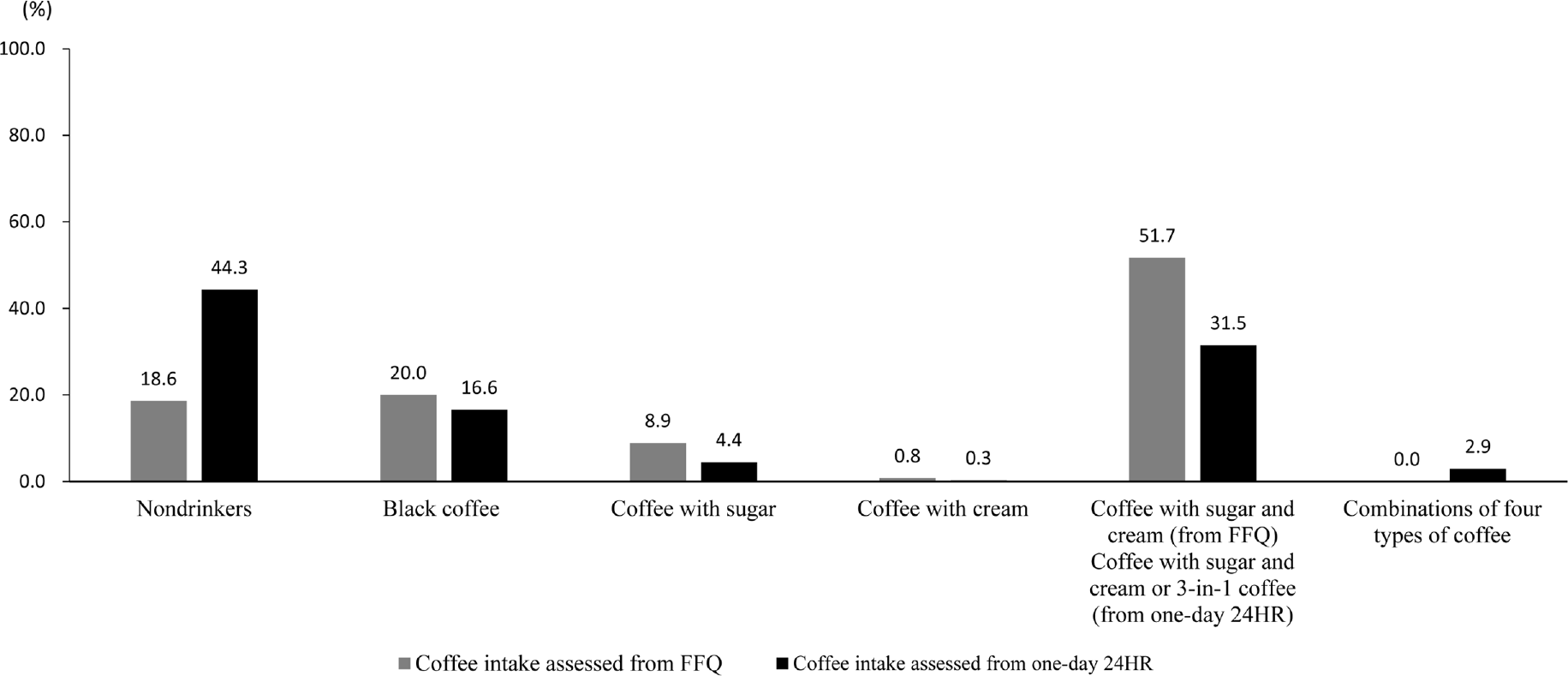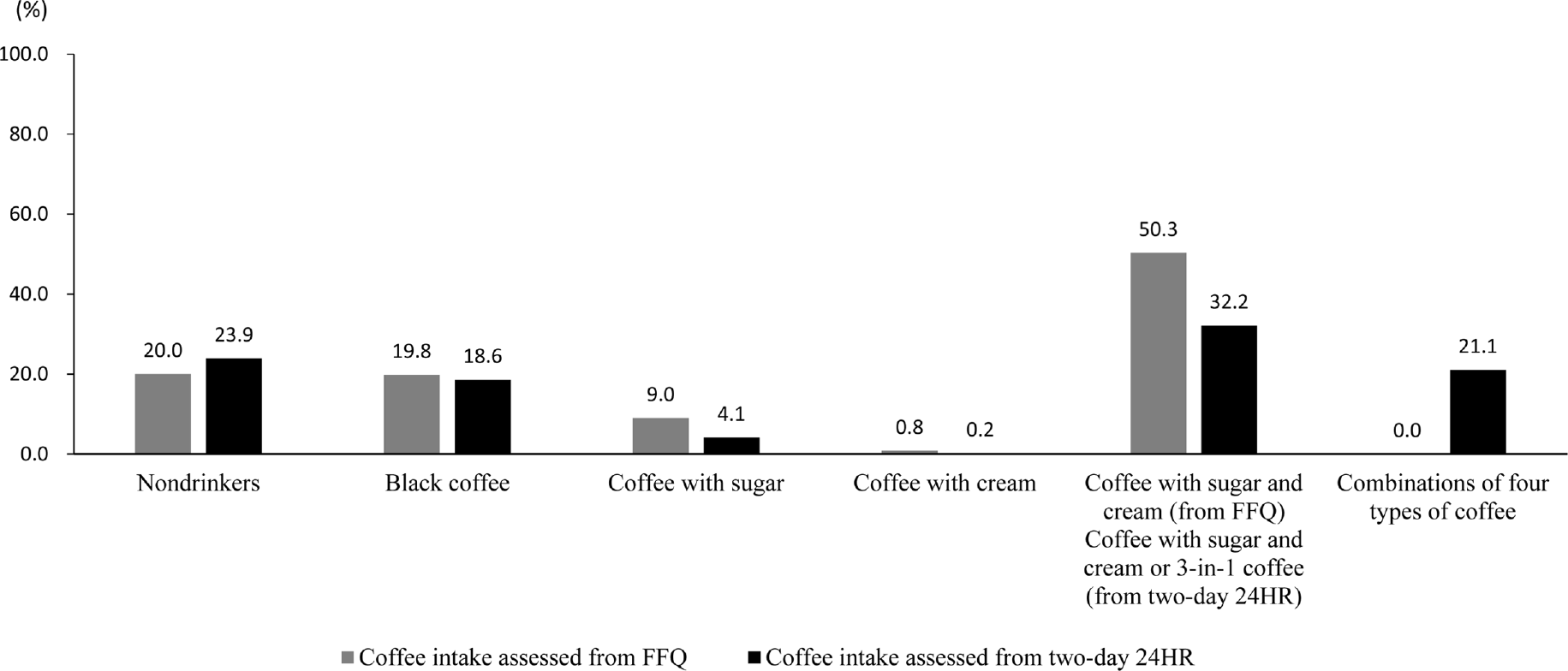Abstract
Objectives
Methods
Results
References
 | Fig. 1.Difference in proportions of types of coffee consumed by dietary assessment instrument: FFQ or one-day 24 HR Abbreviations: FFQ, food frequency questionnaire; 24 HR, 24-hour recall |
 | Fig. 2.Difference in proportions of types of coffee consumed by dietary assessment instrument: FFQ or two-day 24 HR Abbreviations: FFQ, food frequency questionnaire; 24 HR, 24-hour recall |
Table 1.
Table 2.
Table 3.
n (%) or Mean ± SD 1) P-value was evaluated by ANOVA for continuous variables and by the chi-square test for categorical variables P < 0.05. 2) Participants either only consumed one type of coffee or consumed a combination of different types of coffee (represented as combinations of four types of coffee) from 24 HR. 3) A few participants did not provide information. 4) Abbreviations: FFQ, food frequency questionnaire; BMI, body mass index
Table 4.
Table 5.
n (%) 1) Exact agreement of types of coffee between FFQs and one-day 24 HR 2) Cohen's kappa coefficient 5×5; Agreement between nondrinkers only (from one-day 24 HR) and nondrinkers only (from FFQ), black coffee only (from one-day 24 HR) and black coffee only (from FFQ), coffee with sugar only (from one-day 24 HR) and coffee with sugar (from FFQ), coffee with cream only (from one-day 24 HR) and coffee with cream only (from FFQ), and coffee with sugar and cream or 3-in-2 coffee only (from one-day 24HR) and coffee with sugar and cream (from FFQ). 3) Abbreviations: FFQ, food frequency questionnaire; 24 HR, 24-hour recall
Table 6.
n (%) 1) Exact agreement of types of coffee between FFQs and two-day 24 HR 2) Cohen's kappa coefficient 5x5; Agreement between nondrinkers only (from one-day 24 HR) and nondrinkers only (from FFQ), black coffee only (from one-day 24 HR) and black coffee only (from FFQ), coffee with sugar only (from one-day 24 HR) and coffee with sugar (from FFQ), coffee with cream only (from one-day 24 HR) and coffee with cream only (from FFQ), and coffee with sugar and cream or 3-in-2 coffee only (from one-day 24HR) and coffee with sugar and cream (from FFQ). 3) Abbreviations: FFQ, food frequency questionnaire; 24 HR, 24-hour recall




 PDF
PDF ePub
ePub Citation
Citation Print
Print


 XML Download
XML Download